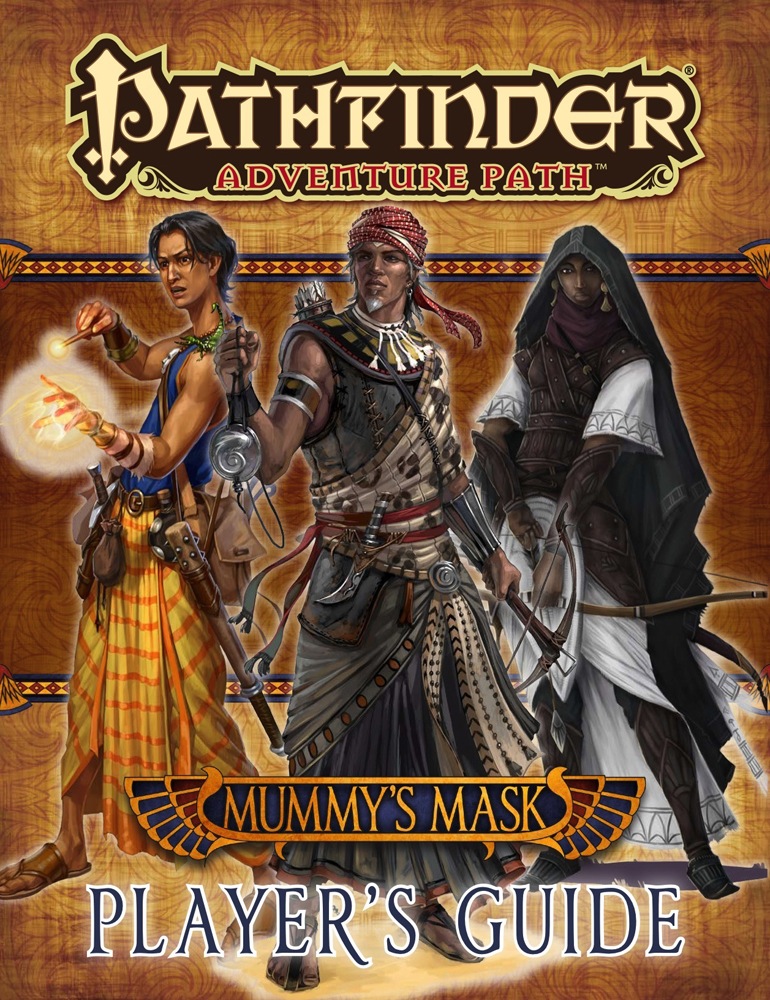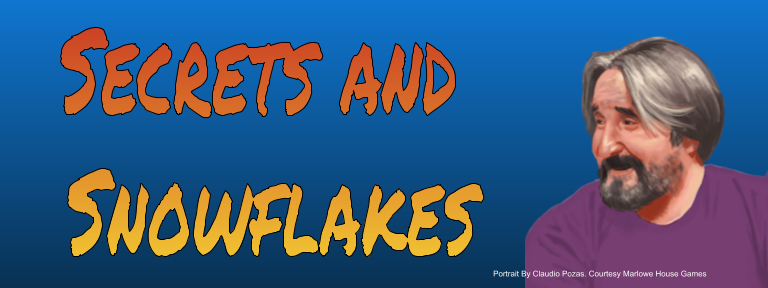As I began writing my blog two weeks ago I was certain it would be the last in this series for a while but it turned out there was more to discuss than I’d originally thought. The last blog focussed on some of the basics required to adapt an adventure this week I want to look a little closer at how to adapt a Pathfinder adventure to the Cypher System.
 Spoiler Warning
Spoiler Warning
In this article I’ll be spending considerable time talking about the Mummy’s Mask AP particularly book one The Half Dead City. So there will be spoilers. You have been warned.
Read for Discoveries
While you are prepping your adventure, read it with an eye for where your major and minor discoveries are. With the dungeons in The Half Dead City (Mummy’s Mask volume one) you can certainly award XP for unravelling the stories wrapped up in the hieroglyphics on the walls and learning who these people were. You will also definitely want to offer XP when the PCs discover that they aren’t the only explorers to be in the Sanctum of the Erudite Eye and that something was stolen from the Reliquary of the Thrice-Divided Soul. You need not award every discovery but I’d be prepared to award most of them.
Remember PCs need about 16 XP to advance a tier and about half the XP the PCs earn is expected to be spent on immediate uses such as rerolls. If you’re running an AP you may have be quite generous with XP to give the players the opportunity to reach tier 6 by the end of book 6.
Fill Role-playing Opportunities
Many GMs already do this, in fact most of Paizo adventures and APs are written to encourage interacting with colorful local NPC and learning their side stories. This is especially true in the early books of an AP.
If you are playing an adventure where the PCs have rivals, let them get to know them. Let some of that rivalry grow naturally. In the Half Dead city that means letting the PCs meet and interact with the Scorched Hand. Not only does this expand your opportunities to award XP as the PCs discover your NPCs desires and motivations it also increases the drama of the moment when a friendly rivalry turns deadly.
Cut Some Combat
Cutting combats may seem counterintuitive but not every encounter is necessary. Sure combat is fun, but it isn’t the focus of the Cypher System the way it is for Pathfinder. Pathfinder requires frequent combat (and other CR-ed obstacles) otherwise the characters never advance. Cypher System on the other hand requires discovery. The upshot of this is while you can convert every combat and every trap you don’t have to. I suggest you focus instead on the encounters that also qualify as a discoveries, add to the narrative, or are fun set piece encounters.
In the first dungeon of the Half Dead City there are multiple encounters with monstrous vermin. All of these encounters become very optional. None of reveal anything major plot points or move your story forward in some other way. Now you might want to keep one to reinforce how dangerous it is raiding tombs. At which point the best encounter for that to keep is the ghost scorpion encounter in A1. Better still, since this encounter can happen at anytime the PCs are in A1 for a length of time this can be an encounter you kick off by offering a lagging PC a GM intrusion.
A Note About GM Intrusions
In the Cypher System the GM can offer the players XP in exchange for accepting a complication. Sometimes this complication is mechanical but most often it’s narrative. A bad or unexpected event occurs and the affected player gains 2 XP, one they can keep and another they pass to another player. This is not meant to be a gotcha moment or a GM v. Player moment but rather is intended to up the stakes, create drama and turn the story in unexpected directions.
Traps As Intrusions
A common way to present traps in the Cypher System is to introduce the trap’s effect as a GM Intrusion. This works well even for adapted adventures. Unless a trap is attached to a particular dungeon feature such as a chest, door, or sarcophagus I tend to “lift” the trap out of its precise location in the dungeon and keep it as a potential Intrusion I can drop on the players when the timing feels right rather than when they step on the wrong 5 foot space. I rarely use a trap out of its original encounter area but in some cases that’s a valid option. After all one hallway in a dungeon is much like the next.
Now, this doesn’t mean I’m a jerk about trap placement. If my PCs are in the same room as the trap I’ll allow them to say they are generally searching the area for traps. I don’t need to spend 20 minutes rolling for every 5’ square when I’m not even sure where the trap is at this point. If the player rolls high enough they find the trap and know how it’s triggered. Now I’ll tell them where it was in the module. This trap’s location is now pretty much fixed and can be triggered normally.
You can treat haunts and some other hazards in much the same way. Triggering them with GM intrusions and moving them around in the dungeon so they trigger at the right dramatic moment.
Final Thoughts
Combats in the Cypher system tends to run faster than combats in Pathfinder and since you may also be trimming out extraneous combats it’s very likely you’ll finish each book noticeably faster than you otherwise might expect. Feel free to embellish any aspect of the story your players seem enamored with. Throw in some intrusions to put a few twists and turns into the plot. If you can tie your player characters’ backstories into these intrusions and in turn loop in the plot of the AP that’s ideal.
I hope you’ve enjoyed this series on adapting Golarion to other game systems particularly the Cypher System from Monte Cook Games. If you’ve ever adapted Golarion or another d20 fantasy setting to another system I’d love to hear your story. Feel free to drop your story in the comments below. And, if you’ve enjoyed this series let me know that too if there’s enough interest maybe we’ll revisit this topic again in the future.
This blog post uses trademarks and/or copyrights owned by Paizo Inc., which are used under Paizo’s Community Use Policy. We are expressly prohibited from charging you to use or access this content. This blog is not published, endorsed, or specifically approved by Paizo Inc. For more information about Paizo’s Community Use Policy, please visit paizo.com/communityuse. For more information about Paizo Inc. and Paizo products, please visit paizo.com.







